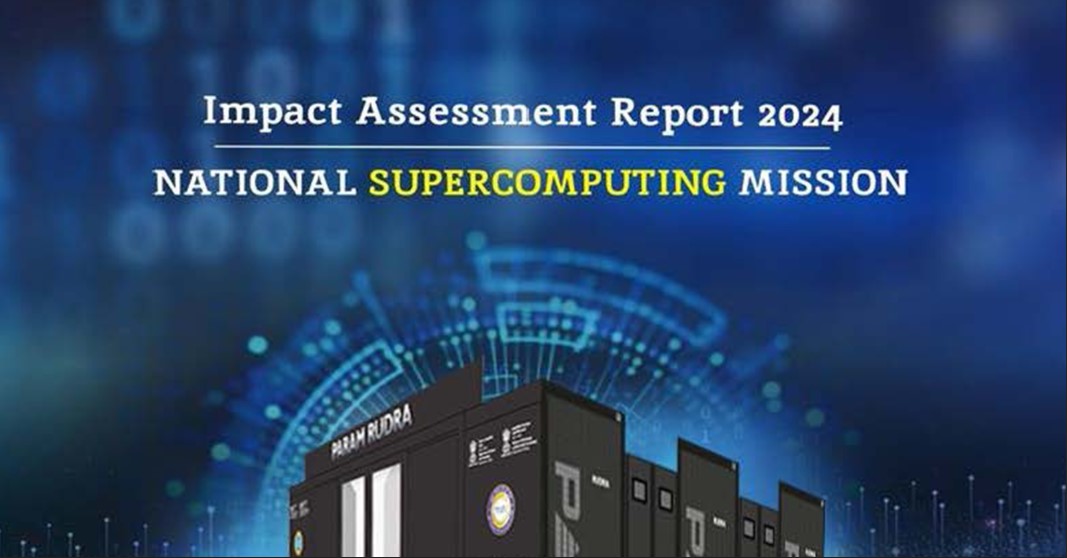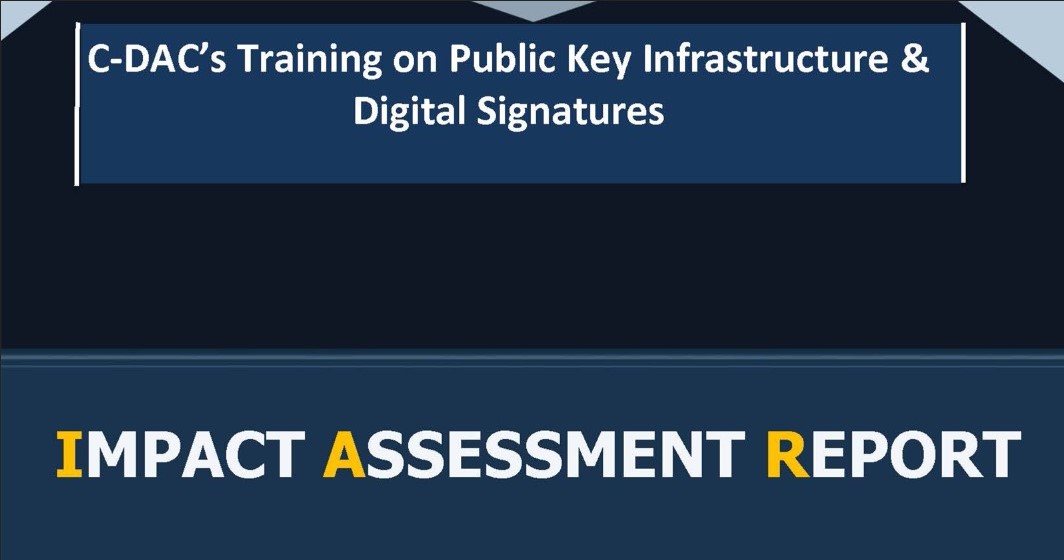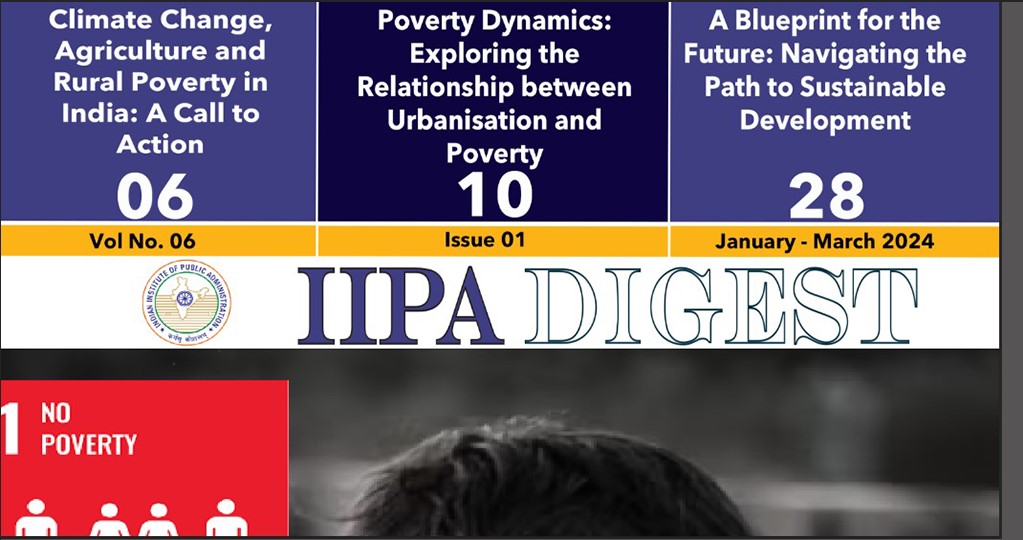Carbon-Conscious AI: Driving Sustainable Innovation in India Written by Debi Clark
Introduction
Artificial intelligence is no longer science fiction; it's reshaping our world, from diagnosing diseases to powering our favorite apps. But this revolution has a hidden, and growing, cost: a massive carbon footprint. As we marvel at what AI can do, we urgently need to confront the environmental price tag that comes with it. As nations worldwide grapple with climate change commitments and the urgent need to reduce greenhouse gas emissions, the environmental impact of AI presents both challenges and opportunities that require careful examination and strategic intervention.
The intersection of AI advancement and environmental sustainability has emerged as one of the most critical policy debates of the 21st century. While AI promises to optimize energy systems, improve resource efficiency, and accelerate climate solutions, its own energy consumption and associated carbon emissions present a paradox that policymakers, technologists, and environmental experts must collectively address. The International Energy Agency projects that electricity demand from data centres worldwide is set to more than double by 2030 to around 945 terawatt-hours (TWh), slightly more than the entire electricity consumption of Japan today, with AI being the most significant driver of this increase (International Energy Agency, 2024).
This comprehensive analysis examines the carbon footprint implications of AI development and deployment, drawing from international studies and focusing particularly on India's approach through the IndiaAI Mission. The essay explores the environmental costs of AI systems, evaluates global best practices for sustainable AI development, and provides a constructive critique of India's AI strategy from a sustainability perspective. Through this examination, we aim to identify pathways toward a more environmentally conscious AI ecosystem that balances technological advancement with climate responsibility.
The Magnitude of AI's Carbon Footprint: Global Perspective
Understanding the environmental impact of AI requires examining both the training and operational phases of AI systems, each contributing significantly to overall carbon emissions. The training phase of large language models has garnered particular attention due to its intensive computational requirements. GPT-3, one of the most well-known language models, produced approximately 552 metric tons of CO2 equivalent (CO2e) during its training phase alone (Strubell et al., 2019). To put this into perspective, this equals the annual emissions of 120 gasoline-powered cars. Similarly, research published in Nature in February 2024 indicates that GPT-3 training emits about 552 metric tons of CO2e, while BLOOM training emits 50.5 metric tons, demonstrating the variability in emissions based on model architecture and training efficiency (Luccioni et al., 2024).
The operational phase of AI systems presents an even more substantial environmental challenge due to the continuous energy consumption of data centers. Recent reports reveal that 4.4% of all the energy in the US now goes toward data centers. The carbon intensity of electricity used by data centers was 48% higher than the US average (Global Efficiency Intelligence, 2024). This statistic is particularly concerning as it indicates that data centers not only consume a significant portion of total energy but also rely disproportionately on carbon- intensive electricity sources.
Major technology companies have experienced dramatic increases in their carbon footprints due to AI adoption. The scale of the problem is starkly visible in corporate reports. Buried in Google's latest 86-page sustainability document is a startling admission: their greenhouse gas emissions have skyrocketed by 48% since 2019 (National Public Radio, 2024). The primary culprit? The massive energy appetite of their AI data centers.. This trend is not isolated to Google; similar patterns are observed across major technology corporations investing heavily in AI infrastructure.
The global scale of data center energy consumption provides context for understanding AI's environmental impact. Because of the energy the world's data centers consume, they account for 2.5 to 3.7 percent of global greenhouse gas emissions, exceeding even those of the aviation industry (Columbia University Earth Institute, 2023). When considering that Bloomberg estimates these data centers consume the equivalent amount of electricity per year as the entire country of Italy, the magnitude of the environmental challenge becomes apparent (Peterson Institute for International Economics, 2024).
International Studies and Best Practices
Several international studies have examined strategies for reducing AI's carbon footprint while maintaining technological advancement. Research from Google identifies four key practices that can significantly reduce the energy and carbon footprints of AI systems: Using sparse models, with fewer parameters, using processors that are specifically designed for machine learning training, rather than general-purpose processors (Google Sustainability Report, 2024). These approaches focus on optimizing model architecture and hardware utilization to achieve comparable performance with reduced computational requirements.
The Massachusetts Institute of Technology has conducted extensive research on potential solutions for reducing AI's environmental impact. According to MIT researchers, taking simple steps can significantly reduce AI data center emissions potentially shaving 10% to 20% off global data center electricity demand. The good news is that companies' desire to do what's right for the environment can align with their financial goals (MIT Sloan School of Management, 2025). This alignment between environmental and financial incentives provides a compelling framework for sustainable AI development.
Comparative studies have also examined the relative efficiency of AI versus human activities. Research published in Scientific Reports found that AI systems emit between 130 and 1500 times less CO2e per page of text generated compared to human writers, while AI illustration systems emit between 310 and 2900 times less CO2e per image than their human counterparts (Luccioni et al., 2024). While this finding suggests potential efficiency gains in specific applications, it must be contextualized within broader considerations of overall energy consumption and the scale of AI deployment.
Table 1: Comparative Carbon Emissions of AI Training Models
The International Energy Agency's analysis provides crucial insights into future energy demand projections. Today, electricity consumption from data centres is estimated to amount to around 415 terawatt hours (TWh), or about 1.5% of global electricity consumption in 2024. It has grown at 12% per year over the last five years (International Energy Agency, 2024). This growth trajectory, combined with AI's accelerating deployment, underscores the urgency of implementing sustainable practices in AI development.
European Union initiatives have pioneered regulatory approaches to sustainable AI development. The EU's Digital Services Act and forthcoming AI Act incorporate environmental considerations, requiring companies to report on their AI systems' energy consumption and carbon footprint. These regulatory frameworks provide models for other nations seeking to balance AI innovation with environmental responsibility.
India's Climate Context and AI Ambitions
India's approach to AI development must be understood within the context of its climate commitments and energy challenges. As one of the world's largest economies and most populous nations, India faces unique pressures in balancing economic development with environmental sustainability. Meet 50 percent of its energy requirements from renewable energy by 2030. Reduce the total projected carbon emissions by one billion metric tons from now (presumably 2022) through 2030. Reduce the carbon intensity of its economy by at least 45 percent by 2030 compared to 2005 levels (Center on Global Energy Policy, Columbia University, 2023). These ambitious targets provide the framework within which India's AI strategy must be evaluated.
India's renewable energy progress has been substantial, with India's renewable energy capacity has grown five-fold from 24 GW in 2014-15 to 136 GW in 2024-25 (Ernst & Young India, 2024). This growth in clean energy infrastructure provides a foundation for sustainable AI development, though significant challenges remain in scaling renewable energy to meet growing computational demands.
The potential for AI to contribute to India's climate goals is significant. As India continues to lead global actions against climate change, its concrete, result-oriented efforts have paved the way to utilize artificial intelligence (AI) and emerging technologies to help achieve its sustainable development goals (India AI Portal, 2024). AI applications in renewable energy optimization, smart grid management, precision agriculture, and industrial efficiency can potentially offset the technology's own carbon footprint.
Table 2: India's Climate Targets and AI Implications
Indian AI startups have already begun addressing climate challenges through innovative solutions. India's AI ecosystem showcase how entrepreneurship and technology can address humanity's greatest battles against climate change and inspire others (YourStory, 2024). These initiatives demonstrate the potential for AI to serve as a tool for environmental protection rather than merely a source of carbon emissions.
The workforce development aspect of sustainable AI is particularly relevant for India. India, one of the fastest-growing economies, faces an urgent need to transition towards sustainable development (International Monetary Fund, 2023). Developing a green workforce capable of implementing and maintaining sustainable AI systems is crucial for realizing both climate and economic objectives.
The IndiaAI Mission: Opportunities and Challenges
The IndiaAI Mission, launched as part of India's comprehensive approach to artificial intelligence development, represents a significant national commitment to AI advancement across multiple sectors (IMPRI Impact and Policy Research Institute, 2025). However, analysis of the mission reveals both promising elements and areas where sustainability considerations could be strengthened. The mission's focus on infrastructure development, innovation promotion, and inclusive growth provides a solid foundation for AI advancement, but explicit attention to environmental sustainability appears limited in current articulations.
One of the mission's key strengths lies in its emphasis on indigenous AI development and capacity building. By promoting domestic AI capabilities, India can potentially reduce its dependence on carbon-intensive imported AI services and develop solutions tailored to local sustainability needs. The mission's focus on creating AI infrastructure within India also presents opportunities for implementing clean energy solutions from the ground up, rather than retrofitting existing systems.
This is where India's ambitious IndiaAI Mission faces a critical test. While impressive in scope, there are concerns that sustainability isn't yet at its heart. As one insider noted, ‘We did touch upon it, but it was not the centre of discussion.’ This is a worrying gap. How can a mission of this scale align with India's pledge to cut carbon emissions in half by 2030 if environmental impact isn't a core design principle from the start? The mission’ current approach risks building a high-tech future on an outdated, carbon-intensive foundation.
The mission's infrastructure development component presents both the greatest opportunity and the most significant risk from a sustainability perspective. AI-driven operations demand extensive computational power, leading to a high carbon footprint. Sustainable AI development requires energy-efficient models and eco-friendly computing solutions to mitigate its impact on climate change (S&R Associates, 2024). The scale of infrastructure investment planned under the mission could either establish India as a leader in sustainable AI or create long-term environmental liabilities.
Table 3: IndiaAI Mission Components and Sustainability Integration Opportunities
A constructive critique of the IndiaAI Mission suggests several areas where sustainability considerations could be better integrated. First, the mission could benefit from explicit carbon footprint targets for AI infrastructure development. Establishing mandatory renewable energy requirements for AI data centers and computing facilities would align the mission with India's broader climate commitments. Second, the mission's innovation promotion components could prioritize funding for AI solutions that demonstrate measurable environmental benefits, creating incentives for sustainable innovation.
The workforce development aspect of the mission presents an excellent opportunity for integrating sustainability principles from the foundation. Training programs could incorporate green AI practices, energy-efficient algorithm design, and sustainable computing principles as core competencies. This approach would ensure that India's AI workforce is equipped to address environmental challenges rather than simply optimizing for performance metrics alone.
Energy Consumption Patterns and Optimization Strategies
The energy consumption patterns of AI systems vary significantly based on their architecture, usage patterns, and underlying infrastructure. Understanding these patterns is crucial for developing effective optimization strategies that can reduce carbon footprints without compromising functionality. Recent analysis indicates that generating one image takes as much energy as fully charging your smartphone (MIT Technology Review, 2025), highlighting the energy intensity of generative AI applications that are becoming increasingly popular.
Training large language models represents the most energy-intensive aspect of AI development, but the operational phase often generates greater total emissions due to widespread deployment and continuous usage. The hardware infrastructure supporting AI systems contributes significantly to overall energy consumption, with Market research firm TechInsights estimates that the three major producers (NVIDIA, AMD, and Intel) shipped 3.85 million GPUs to data centers in 2023, up from about 2.67 million in 2022. That number is expected to have increased by an even greater percentage in 2024 (PBS NewsHour, 2025).
Optimization strategies for reducing AI energy consumption can be categorized into several approaches: algorithmic efficiency improvements, hardware optimization, infrastructure design, and operational practices. Algorithmic approaches include model pruning, quantization, and knowledge distillation techniques that maintain performance while reducing computational requirements. Hardware optimization involves using specialized processors designed for AI workloads, which can provide significant efficiency gains compared to general- purpose computing systems.
Infrastructure design considerations include data center location, cooling systems, and power distribution efficiency. Locating data centers in regions with abundant renewable energy resources can substantially reduce carbon footprints, while advanced cooling technologies can minimize energy consumption for thermal management. Operational practices such as workload scheduling to align with renewable energy availability and dynamic resource allocation can further optimize energy efficiency (Carbon Direct, 2024).
Policy Recommendations for Sustainable AI Development
The development of sustainable AI requires coordinated policy interventions that address both technological and governance challenges. Based on international best practices and India's specific context, several policy recommendations emerge that could enhance the sustainability profile of AI development while maintaining innovation momentum.
Regulatory frameworks should incorporate mandatory environmental impact assessments for large-scale AI projects. These assessments would require developers to quantify their systems' carbon footprints, identify optimization opportunities, and demonstrate compliance with sustainability standards. Such requirements would create accountability mechanisms and incentivize sustainable design practices from project inception.
Financial incentives can play a crucial role in promoting sustainable AI development. Tax incentives for AI companies demonstrating measurable carbon footprint reductions, subsidies for renewable energy adoption in data centers, and green bonds for sustainable AI infrastructure could accelerate adoption of environmentally responsible practices. These incentives should be designed to reward both absolute emissions reductions and efficiency improvements relative to performance benchmarks.
Investment in research and development of sustainable AI technologies requires sustained government support. Funding programs specifically targeting energy-efficient AI algorithms, green computing technologies, and sustainable data center designs would accelerate innovation in this critical area. International collaboration on sustainable AI research could leverage global expertise while addressing shared environmental challenges.
Table 4: Policy Intervention Framework for Sustainable AI
Public procurement policies could serve as powerful tools for promoting sustainable AI adoption. Government agencies could prioritize vendors demonstrating superior environmental performance, creating market demand for sustainable AI solutions. This approach would leverage the government's purchasing power to drive industry-wide improvements in sustainability practices.
International cooperation on sustainable AI standards would facilitate knowledge sharing and prevent regulatory fragmentation that could hinder global sustainability efforts. India could play a leadership role in developing multilateral frameworks for sustainable AI development, particularly through partnerships with other developing nations facing similar challenges in balancing economic growth with environmental responsibility.
Technology Solutions and Innovation Pathways
The development of sustainable AI requires breakthrough innovations across multiple technological domains. Current research directions show promising potential for dramatically reducing AI's carbon footprint while maintaining or improving performance capabilities. These innovations span hardware design, software optimization, and system architecture approaches that collectively address the environmental challenges posed by AI systems.
Hardware innovations are revolutionizing the efficiency of AI computation. Specialized processors designed specifically for machine learning workloads demonstrate significant improvements in energy efficiency compared to traditional computing architectures. Neuromorphic computing, which mimics the structure and function of biological neural networks, offers potential for orders-of-magnitude improvements in energy efficiency for certain AI applications (Scientific American, 2025).
Software optimization techniques provide immediate opportunities for carbon footprint reduction without requiring hardware changes. Model compression techniques, including pruning, quantization, and knowledge distillation, can reduce model size and computational requirements by 50-90% while maintaining acceptable performance levels (MIT Technology Review, 2025). These techniques are particularly valuable for deployment scenarios where computational resources are limited.
Edge computing represents a paradigm shift that can substantially reduce the carbon footprint of AI applications by bringing computation closer to data sources and users. This approach reduces the energy consumption associated with data transmission and enables the use of local renewable energy resources. Edge AI also supports privacy preservation, which aligns with broader sustainable development goals.
Economic Implications of Sustainable AI
The economic implications of sustainable AI development extend beyond environmental considerations to encompass competitiveness, innovation capacity, and long-term economic viability. Organizations and nations that successfully integrate sustainability into their AI strategies may gain significant competitive advantages as environmental regulations tighten and consumer preferences shift toward environmentally responsible products and services.
The total cost of ownership for AI systems includes not only initial development and deployment costs but also ongoing operational expenses, of which energy consumption represents a substantial component. Sustainable AI practices that reduce energy consumption can translate into significant cost savings over the operational lifetime of AI systems (Nature Humanities and Social Sciences Communications, 2024). These savings become increasingly important as AI deployment scales and energy costs continue to rise.
Investment patterns in AI are beginning to reflect environmental considerations, with venture capital firms and institutional investors increasingly incorporating environmental, social, and governance (ESG) criteria into their decision-making processes. Companies demonstrating superior sustainability performance in their AI operations may have improved access to capital and more favorable investment terms.
The development of sustainable AI capabilities can create new economic opportunities through the export of clean technologies and expertise. India's success in developing sustainable AI solutions could position the country as a global leader in clean technology exports, potentially generating substantial revenue streams while contributing to global environmental objectives.
Challenges and Barriers to Implementation
Despite the clear need for sustainable AI development, several challenges and barriers impede rapid progress toward environmental sustainability in the AI sector. Understanding these obstacles is crucial for developing effective strategies to overcome them and accelerate the transition to sustainable AI practices.
Technical challenges include the complexity of accurately measuring AI systems' carbon footprints, particularly when considering the full lifecycle impacts of hardware manufacturing, data center construction, and end-of-life disposal. The lack of standardized measurement methodologies makes it difficult to compare sustainability performance across different AI systems and organizations (IDC Research, 2024).
Economic barriers include the higher upfront costs associated with sustainable AI infrastructure and the misalignment of short-term financial incentives with long-term sustainability objectives. Organizations may be reluctant to invest in sustainable AI practices if the benefits are primarily realized over extended time horizons or if the competitive advantages are unclear.
Regulatory uncertainties create additional challenges for organizations seeking to invest in sustainable AI capabilities. The lack of clear policy frameworks and standardized requirements makes it difficult for companies to plan long-term sustainability strategies and may discourage investment in sustainable technologies.
Knowledge gaps and skill shortages in sustainable AI practices represent human capital challenges that must be addressed through education, training, and professional development programs. The rapid pace of technological change in both AI and sustainability domains requires continuous learning and adaptation.
Future Outlook and Emerging Trends
The future of sustainable AI development is shaped by converging trends in technology advancement, policy development, and market forces that collectively point toward increased emphasis on environmental sustainability in AI systems. Several key trends are likely to influence the trajectory of sustainable AI development over the coming decade.
Technological convergence between AI and clean energy technologies is creating new opportunities for symbiotic development. AI systems optimized for renewable energy integration can help manage the variability and uncertainty associated with solar and wind power, while clean energy sources can power AI systems with reduced carbon footprints (Plan Be Eco, 2024).
The emergence of carbon pricing mechanisms and environmental regulations specifically targeting digital technologies will create stronger market incentives for sustainable AI development. As governments implement carbon taxes and emissions trading systems that include digital services, the economic case for sustainable AI will become increasingly compelling.
AI's carbon footprint underscores the critical need for expertise in clean electricity, grid management, decarbonization, and carbon removal expertise that will become increasingly vital as more companies realize the complexity and cost of the journey ahead (Peterson Institute for International Economics, 2024). This recognition is driving investment in interdisciplinary expertise that combines AI technical capabilities with deep understanding of environmental systems and climate science.
The development of circular economy principles for AI systems, including hardware recycling, software reuse, and energy recovery, represents an emerging area of innovation that could substantially reduce the environmental impact of AI deployment. These approaches focus on minimizing waste and maximizing resource efficiency throughout the AI system lifecycle.
Global Cooperation and Knowledge Sharing
International cooperation on sustainable AI development is essential for addressing the global scale of environmental challenges posed by AI systems. No single nation or organization can solve these challenges independently, making collaboration and knowledge sharing critical for success.
Multilateral initiatives such as the Global Partnership on AI (GPAI) and the UN's AI for Good initiative provide frameworks for international cooperation on sustainable AI development. These platforms facilitate the sharing of best practices, coordinated research efforts, and the development of common standards and protocols.
Technology transfer mechanisms can help ensure that sustainable AI innovations developed in advanced economies are accessible to developing nations, preventing the emergence of sustainability gaps that could undermine global environmental objectives. India's position as both an AI innovator and a developing nation makes it well-suited to facilitate such technology transfer initiatives.
Conclusion
The intersection of artificial intelligence and environmental sustainability represents one of the defining challenges of the digital age. As AI systems become increasingly ubiquitous and powerful, their environmental impact grows correspondingly, creating an urgent need for sustainable development practices that can maintain technological advancement while minimizing ecological harm. The evidence presented throughout this analysis demonstrates both the magnitude of the challenge and the significant opportunities for positive impact through thoughtful policy intervention and technological innovation.
The global scale of AI's carbon footprint, with data centers consuming electricity equivalent to entire nations and individual AI training runs producing emissions comparable to hundreds of automobiles, underscores the imperative for immediate action (International Energy Agency, 2024; Strubell et al., 2019). However, the same technological capabilities that create these environmental challenges also offer unprecedented opportunities for environmental solutions, from optimizing renewable energy systems to improving industrial efficiency and accelerating climate adaptation strategies.
India's IndiaAI Mission represents a critical opportunity to demonstrate that developing nations can pursue ambitious AI strategies while maintaining strong commitments to environmental sustainability. The mission's focus on indigenous development, infrastructure creation, and workforce development provides multiple entry points for integrating sustainability principles that could serve as models for other nations facing similar challenges in balancing economic development with environmental responsibility.
The policy recommendations outlined in this analysis emphasize the importance of regulatory frameworks that create accountability for environmental performance, financial incentives that align market forces with sustainability objectives, and research investments that accelerate technological solutions. These interventions must be implemented in coordination to create synergistic effects that exceed the sum of their individual impacts.
Looking forward, the success of sustainable AI development will depend on continued international cooperation, technological innovation, and policy leadership that recognizes the interconnected nature of technological advancement and environmental stewardship. The stakes of this challenge extend far beyond the technology sector to encompass global climate stability, economic development patterns, and intergenerational equity.
The path toward sustainable AI is neither simple nor predetermined, but the convergence of technological capability, economic opportunity, and environmental necessity creates unprecedented momentum for positive change. India's contribution to this global effort, through the enhancement of its AI Mission with stronger sustainability components, could influence the trajectory of AI development worldwide and demonstrate that environmental leadership and technological innovation are not competing objectives but complementary strategies for building a more prosperous and sustainable future.
The urgency of climate change and the rapid pace of AI development create a narrow window of opportunity for establishing sustainable practices as the foundation of AI systems rather than retrofitting them after deployment. Ultimately, we stand at a crossroads. The choices we make now the policies we draft, the technologies we fund, the priorities we set will decide AI's ultimate legacy. Will it be remembered as a key that helped us solve the climate crisis, or as an engine that made it worse? The answer depends on the conscious, sustainable path we choose today.
References
1. Carbon Direct. (2024). Understanding the carbon footprint of AI and how to reduce it. Carbon Direct Insights.
2. Center on Global Energy Policy, Columbia University. (2023, February 20). Assessing India's ambitious climate commitments. CGEP Publications.
3. Columbia University Earth Institute. (2023, June 9). AI's growing carbon footprint. Columbia Climate School News.
4. Ernst & Young India. (2024). SDGs driving India's net zero ambition. EY Climate Change and Sustainability Services.
5. Global Efficiency Intelligence. (2024). Data centers in the AI era: Energy and emissions impacts in the U.S. and key states. GEI Research Reports.
6. Google Sustainability Report. (2024). Environmental impact of artificial intelligence systems. Google Environmental Report.
7. DC Research. (2024). AI datacenter capacity, energy consumption, and carbon emission projections. IDC Market Research Report (Doc #US52131624).
8. IMPRI Impact and Policy Research Institute. (2025, March 6). IndiaAI Mission (2024): Empowering innovation, infrastructure, & inclusive growth through AI. IMPRI Insights.
9. India AI Portal. (2024). How AI will become the game changer in India's climate tech sector to combat climate change in the coming years? India AI Government Portal.
10. International Energy Agency. (2024). Energy and AI: Data centre electricity demand projections. IEA Analysis Report.
11. International Monetary Fund. (2023, March 6). India can balance curbing emissions and economic growth. IMF News Articles.
12. Luccioni, A., Viguier, S., & Ligozat, A. L. (2024). The carbon emissions of writing and illustrating are lower for AI than for humans. Scientific Reports, 14, Article 3732.
13. MIT Sloan School of Management. (2025, January 7). AI has high data center energy costs but there are solutions. MIT Sloan Ideas Made to Matter.
14. MIT Technology Review. (2025, May 20). We did the math on AI's energy footprint. Here's the story you haven't heard. MIT Technology Review Analysis.
15. National Public Radio. (2024, July 12). AI brings soaring emissions for Google and Microsoft, a major contributor to climate change. NPR Technology.
16. Nature Humanities and Social Sciences Communications. (2024, August 14). Ecological footprints, carbon emissions, and energy transitions: The impact of artificial intelligence (AI). Nature Communications, 15, Article 7024.
17. PBS NewsHour. (2025, May 30). The growing environmental impact of AI data centers' energy demands. PBS News Weekend.
18. Peterson Institute for International Economics. (2024, February 29). AI's carbon footprint appears likely to be alarming. PIIE Real-time Economics.
19. Plan Be Eco. (2024, May 9). AI's carbon footprint - how does the popularity of artificial intelligence affect the climate? Plan Be Eco Blog.
20. S&R Associates. (2024, August 23). Climate change and ESG considerations in India's AI- driven future. S&R Associates Legal Insights.
21. Scientific American. (2025, June 23). AI and data centers could cut more climate-change- causing emissions than they create. Scientific American Environment.
22. Strubell, E., Ganesh, A., & McCallum, A. (2019). Energy and policy considerations for deep learning in NLP. Proceedings of the 57th Annual Meeting of the Association for Computational Linguistics.
23. The Secretariat. (2024, April 30). Sustainability question looms over make AI in India mission.
24. The Secretariat Analysis.
25. YourStory. (2024, February 7). AI startups: India's secret weapon against climate change (but don't tell Silicon Valley). YourStory Technology.
Leave a comment
More articles from Emerging Technologies






















